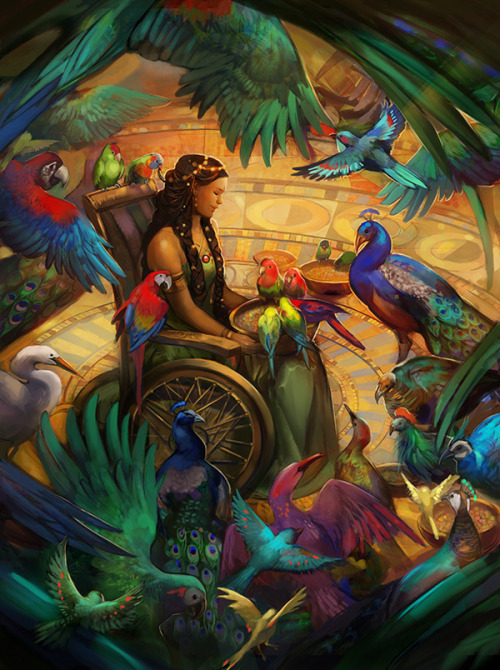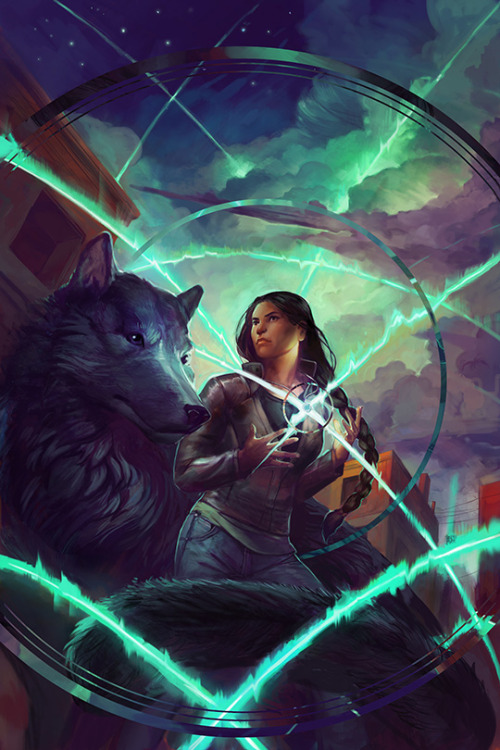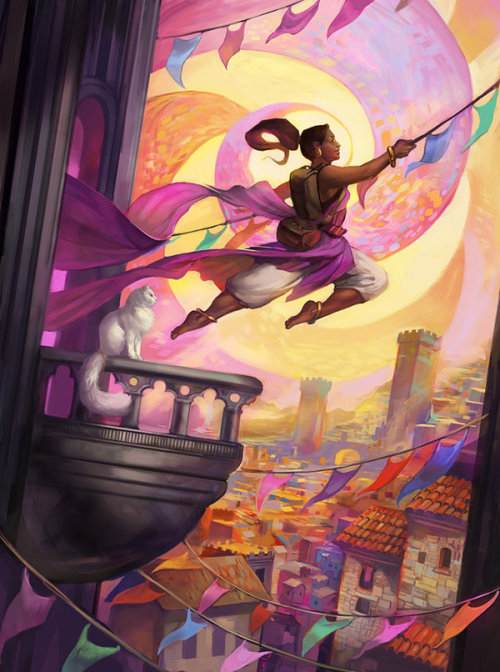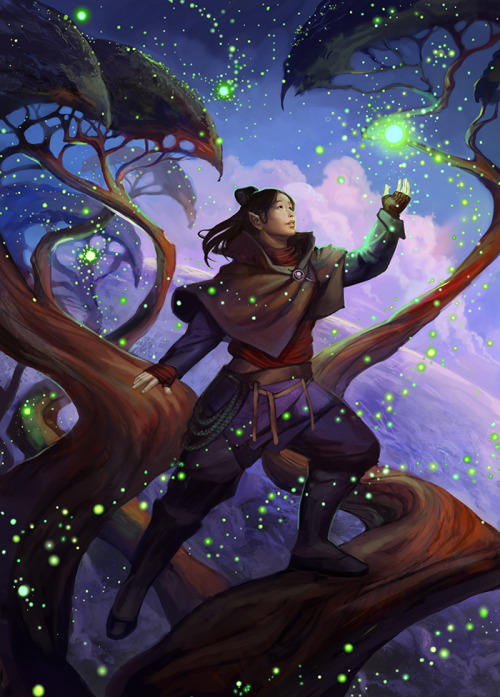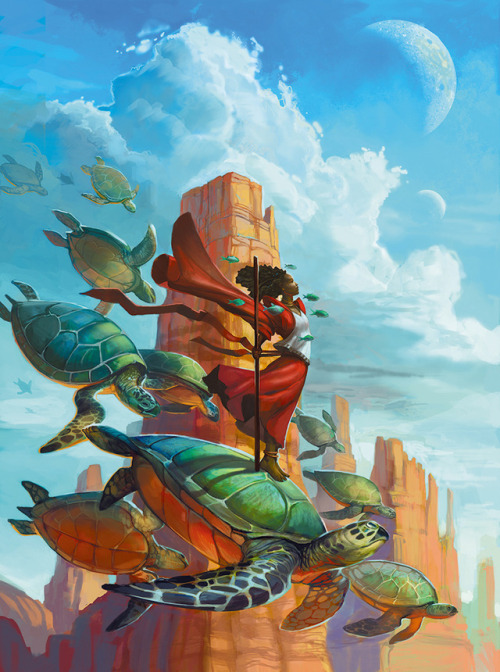Copperfingertips - Represent The Human Race

More Posts from Copperfingertips and Others
Possible Lunarpunk slogan
after seeing all the light pollution in my city:
“Bring back the dark!”

[Top left: Green onion seedlings. Bottom left: Baby basil seedlings. Right: A jungle of thyme.]
I’ve been growing some veggies indoors for a while now (almost a year?) and we finally got the lighting right for the plants. These little guys are completely solarpunk/lunarpunk. I live out in the country and for some reason that wasn’t known to us until after we bought our house there is a ban on all veggie growing and structure building. So we couldn’t even build an outdoor greenhouse. These little guys are growing in a legit solarpunk recycled diy’d greenhouse structure inside my garage. Eventually we are going to try and go with completely heirloom non-gmo organic seedlings but until then these little guys are fighting unjust zoning regulations, fighting our ever increasing dystopian reality (I have a yard and I can’t plant things!), and living it up #solarpunk style.
Did I mention our neighbors are bending these rules too? :) I’m not the only solarpunk in my area. My neighbor plants mint and strawberries in their flowerbeds and planted a plum tree right between our property lines so that when it matures no one can say it was theirs or that the regulation people didn’t know about it. It’s been there for years people. I’ve also started some mint and lavender bushes myself. They can ask me all they want about what they are… I’ll just tell them they’re decorative.
Now, I’m not saying that people should do these things. Bending the rules can get you into trouble. But my area is poor and people are hungry, local food pantries have been closing too and without these solarpunk guerrilla gardening tactics people would go hungry. I only know three of my neighbors because everyone keeps loosing their homes. Neighbors last about a year here and then are forced to leave.
At my old town just 20 min away from where I live now, we grew grapes and apples and let whoever was hungry have them. Our neighbors sometimes foraged. There were wild apple trees, grapes, and mulberries and people knew where they were and when they were ready to be picked. It helped a lot of people who wouldn’t have had anything to eat otherwise. banning food sources is what should be illegal. Not tending to gardens. Gardens and plants should never be banned. We live on a living planet, it’s what kept us alive all these centuries. Why are we turning our back on it now?

~ the pondering muse🌙
Where have all the bugs gone? That’s what this post tries to answer and if you’re like me and hadn’t really noticed the lack of bugs recently, you’ll understand why this is such a big deal after reading the article. However, before we dive into this article, I want to share with you what I’ve noticed.
I’ve lived in Missouri for almost 19 years now, about a decade ago I remember windshields so full of bug splats that you couldn’t see out of it while driving down the highway and cringing at the *thump* of especially large bugs when they hit. I remember a season where when I rode my bike around town I couldn’t not hit a grasshopper because there were more than I could count all over the roads and fields. Last summer however? I remember pulling a single butterfly from the grill of my dad’s truck. That’s it… There were no more bugs. …
Here’s how plentiful our world used to be. We tend to think that the environmental conditions that we are born into are normal, but it is anything but normal.
“In “The Once and Future World,” the journalist J.B. MacKinnon cites records from recent centuries that hint at what has only just been lost: “In the North Atlantic, a school of cod stalls a tall ship in midocean; off Sydney, Australia, a ship’s captain sails from noon until sunset through pods of sperm whales as far as the eye can see. … Pacific pioneers complain to the authorities that splashing salmon threaten to swamp their canoes.” There were reports of lions in the south of France, walruses at the mouth of the Thames, flocks of birds that took three days to fly overhead, as many as 100 blue whales in the Southern Ocean for every one that’s there now. “These are not sights from some ancient age of fire and ice,” MacKinnon writes. “We are talking about things seen by human eyes, recalled in human memory.”“
So, when you read the above article, please understand how dire these circumstances are for us and our planet. Ok, so what are the highlights of the article?
“A 2013 paper in Nature, which modeled both natural and computer-generated food webs, suggested that a loss of even 30 percent of a species’ abundance can be so destabilizing that other species start going fully, numerically extinct — in fact, 80 percent of the time it was a secondarily affected creature that was the first to disappear.”
- Drastic drops in insect populations have been recorded globally.
- World’s largest king penguin colony shrank by 88%.
- Blue-fin Tuna populations have shrunk 97%.
- 60% decrease in total wild land animal populations.
- 96% of the planet’s biomass now is humans and livestock. Wild animals represent less than 4%. …
- 10-60% less arthropod biomass in Puerto Rico.
- 50-80% drops in partridges from France due to the lack of insects they eat.
- 50% of all farmland birds in Europe are gone.
- Birds which rely on insects may be starving to death due to their collapse.
These are some drastic decreases and we tend to forget that all species are connected. When we loose one species, we can loose all the species that rely on it. We need to recognize what is happening around us with our environment and our planet. We need to know, that what we are seeing today, isn’t normal.

Purple Dragon aesthetic

Kiki´s garden greenhouse
(just realised I never posted this on tumblr heh sorry)
this will be available as a square print later!





There’s this greenhouse not too far from my house that I fell in love with when I went for the first time last year. It’s so crowded, but all of the plants are very healthy and pest-free. They have 50+ year old cacti and a ton of exotic plants.
@eternity-in-your-eyes this is just amazing! I don’t know if I’d be able to leave a place like that once I have entered haha thank you for the submission as I could only imagine having a greenhouse like that some day.
Do you know how to take care of your sewing machine?
Taking care of your machine over the long haul influences the longevity of your machine. It could mean the difference of having a machine over the span of 5 years versus 50+ years. Can a sewing machine even last 50 years? Yes, with proper maintenance and care it can! My personal machine was released about 1960 making it 58 years old. My grandmother’s Singer Touch and Sew is around 50 years old and she uses that machine so much it’s ridiculous it’s still working!
So how do I take care of my machine?
Glad you asked! It’s really not that hard to take care of your machine, in fact, the instruction booklet that came with your machine probably tells you how. Some new machines make it really difficult to take them apart to clean them up, but you’re going to want to figure out how!
If your instruction booklet doesn’t tell you how to clean your machine, below are some pictures from my own instruction booklet. Most machines are very similar and you can generally follow the same instructions.



Here’s some general advice for cleaning your machine:
Firstly, dust out your machine. This means removing all the lint that gathered up from your last project (or projects). You can take compressed air and blow out your machine, or, like me, you can take a small, soft paint brush and gently brush it out.
Second, time to oil your machine! You can find sewing machine oil at almost any craft store. I recommend one with a zoom spout to make it easier to oil your machine.
So what do you oil? Pretty much any moving parts except gears and your belt. (Take a look at the pictures.) Work in the oil as you apply it by turning the hand wheel toward yourself. Also be sure not to put oil anywhere you would have thread or fabric moving through. Those places generally aren’t meant to be oiled and it will end up on your projects!!
Lastly, lubricate your gears. This is also a great time to check the condition of your gears. Gears wear down over time and I can say that I’ve had to replace gears before due to wear and tear. The teeth on the gears break with age (or improper machine use), although it can take a while before that happens.
LUBRICANT IS NOT THE SAME AS OIL. DO NOT OIL GEARS. NO. STOP. BAD. You can also buy this at your craft store, most likely.
How often should I be dusting and oiling my machine?
After every major project, or, if you’re working on a very large project (like a leather jacket), you might want to do it sporadically throughout.
How often should I lubricate my machine?
If you don’t use your machine frequently, once every two years is probably acceptable. I use my machine frequently enough to justify once a year.
OMG I FOUND BROKEN PARTS WHAT DO I DO?!
Google it. Most likely someone has already had the same problem and it’s probably documented somewhere on the internet just waiting for you to stumble across. Gears and belt replacements are the most common.
If you’re looking for Singer Sewing machine parts, I highly recommend ordering parts from www.singeronline.com. Not only are they reasonably priced, but their products are high quality. I’ve ordered many parts from this business and they have my star of approval. They also have a youtube channel and document some common problems with machines as well as how to fix them. Check it out: Singer Online YouTube
adult: what do you want to be when you grow up?
me: an old lady with a garden, soulmate, tons of animals, & a peaceful forest home
Not Herbalism but Baker Creek Heirloom Seeds just put out their 2019 Catalog. It’s time to plan gardens now, so that when spring comes, you can execute that plan. I have lived in apartments with very little space for the past 7 years, so I thought I’d share my “grows well in containers list” with you guys.
Greens: Most greens, spinach, arugula, lettuces, some cabbages, etc. will grow in a container quite well.
Herbs: Similar to above, you can get your typical herbs to grow in pots quite well, usually. The yield with herbs is always very good too.
Anything with “Tom Thumb” or “Dwarf” in front of it: These are varieties made for containers, basically. They’re very, very small. There’s peas, corn (as in pop corn), tomatoes. Lots of stuff. Even flowers.
Cheery Tomatoes: In general, with any “regular” veg, you’ll probably need a larger pot (Think like 1 gal). If you’re willing to go the distance, though, cherry tomatoes are a great container plant, in my opinion.
Alpine Strawberries: Again, somewhat larger (though not as large as above) is recommended to get more berries. These guys are tiny strawberries. Like one bite berries.
Banana Peppers: I had two plants. They went wild. I ended up with several fresh peppers mixed into stir fry all summer and then two large canned jars of them, which I munched on through fall to the very very beginning of winter.
Carrots: Actually, if you’ve got a tall enough pot, you can grow regular carrots. But I like the Parisienne or other little round globe varieties.
Radishes: Similar concept to the carrots. Small, round. Remember to eat your radish and carrot greens as well.
Green onions: Either a chive situation or, some companies do actually have very small, like golf ball sized onions.
Look for “container mixes” on seed sites: Quite a few seed sights often put together container seed mixes. They’re usually the varieties recommended by the company.
So that’s my list. Remember, grow what you want to eat. Also, a good plan is grow what is hard for you to buy. That way you aren’t doubling down on what you can easily find in town.
-
 verner2 reblogged this · 1 year ago
verner2 reblogged this · 1 year ago -
 tiredtwentyforseven liked this · 3 years ago
tiredtwentyforseven liked this · 3 years ago -
 b0ytemper liked this · 4 years ago
b0ytemper liked this · 4 years ago -
 bigoldcabbagepatch liked this · 4 years ago
bigoldcabbagepatch liked this · 4 years ago -
 potpourribee liked this · 4 years ago
potpourribee liked this · 4 years ago -
 may-or-may-not-be-me liked this · 4 years ago
may-or-may-not-be-me liked this · 4 years ago -
 liberty405 liked this · 5 years ago
liberty405 liked this · 5 years ago -
 sisterofreverance liked this · 5 years ago
sisterofreverance liked this · 5 years ago -
 thegreenecogeek reblogged this · 5 years ago
thegreenecogeek reblogged this · 5 years ago -
 purplenickel reblogged this · 5 years ago
purplenickel reblogged this · 5 years ago -
 off-grid-separatism reblogged this · 5 years ago
off-grid-separatism reblogged this · 5 years ago -
 off-grid-separatism reblogged this · 5 years ago
off-grid-separatism reblogged this · 5 years ago -
 galaxypup9211 liked this · 5 years ago
galaxypup9211 liked this · 5 years ago -
 storm-writer liked this · 5 years ago
storm-writer liked this · 5 years ago -
 radfem-suggestion reblogged this · 5 years ago
radfem-suggestion reblogged this · 5 years ago -
 cancelthatapocalypse liked this · 5 years ago
cancelthatapocalypse liked this · 5 years ago -
 hellanahmean liked this · 5 years ago
hellanahmean liked this · 5 years ago -
 punk-generally reblogged this · 5 years ago
punk-generally reblogged this · 5 years ago -
 femomdagen liked this · 5 years ago
femomdagen liked this · 5 years ago -
 postitlapp reblogged this · 5 years ago
postitlapp reblogged this · 5 years ago -
 postitlapp liked this · 5 years ago
postitlapp liked this · 5 years ago -
 afoxspainting liked this · 5 years ago
afoxspainting liked this · 5 years ago -
 earthkittenn reblogged this · 5 years ago
earthkittenn reblogged this · 5 years ago -
 witch-boy-666 liked this · 5 years ago
witch-boy-666 liked this · 5 years ago -
 0solarpunk0 reblogged this · 5 years ago
0solarpunk0 reblogged this · 5 years ago -
 supreeto0o liked this · 5 years ago
supreeto0o liked this · 5 years ago -
 theoreticalheroine liked this · 5 years ago
theoreticalheroine liked this · 5 years ago -
 nodenofthieves liked this · 5 years ago
nodenofthieves liked this · 5 years ago -
 altaroftransexuality liked this · 5 years ago
altaroftransexuality liked this · 5 years ago -
 kinoite liked this · 6 years ago
kinoite liked this · 6 years ago -
 unheavenlymother reblogged this · 6 years ago
unheavenlymother reblogged this · 6 years ago -
 spooks-person reblogged this · 6 years ago
spooks-person reblogged this · 6 years ago -
 thehannsolo reblogged this · 6 years ago
thehannsolo reblogged this · 6 years ago -
 mirrix reblogged this · 6 years ago
mirrix reblogged this · 6 years ago -
 spiritualcuriosities reblogged this · 6 years ago
spiritualcuriosities reblogged this · 6 years ago -
 miscellaneous-entertainment liked this · 6 years ago
miscellaneous-entertainment liked this · 6 years ago -
 the-sofa-king-awesome liked this · 6 years ago
the-sofa-king-awesome liked this · 6 years ago -
 driftersbone reblogged this · 6 years ago
driftersbone reblogged this · 6 years ago -
 princess-unipeg liked this · 6 years ago
princess-unipeg liked this · 6 years ago -
 nevichaos reblogged this · 6 years ago
nevichaos reblogged this · 6 years ago


